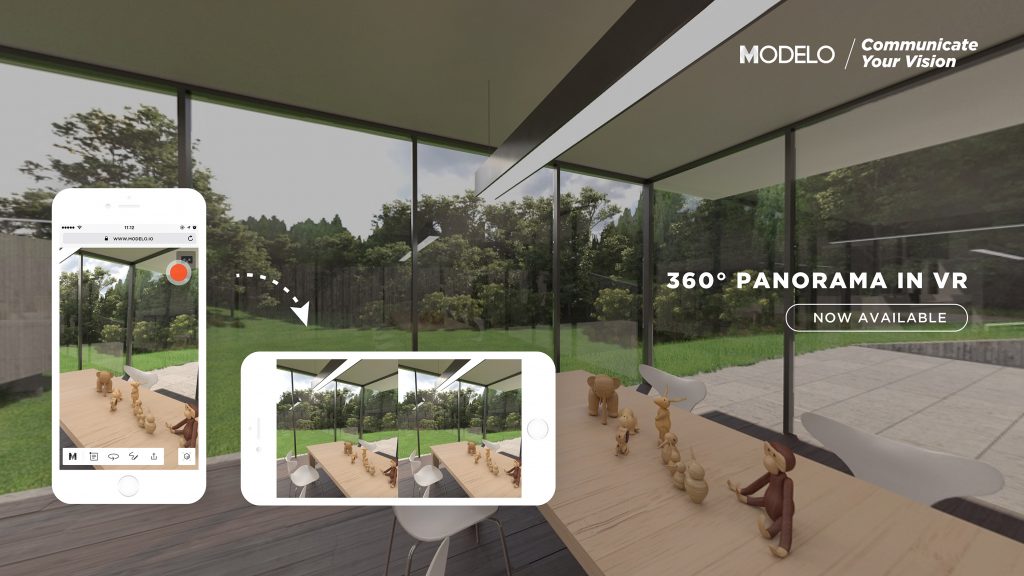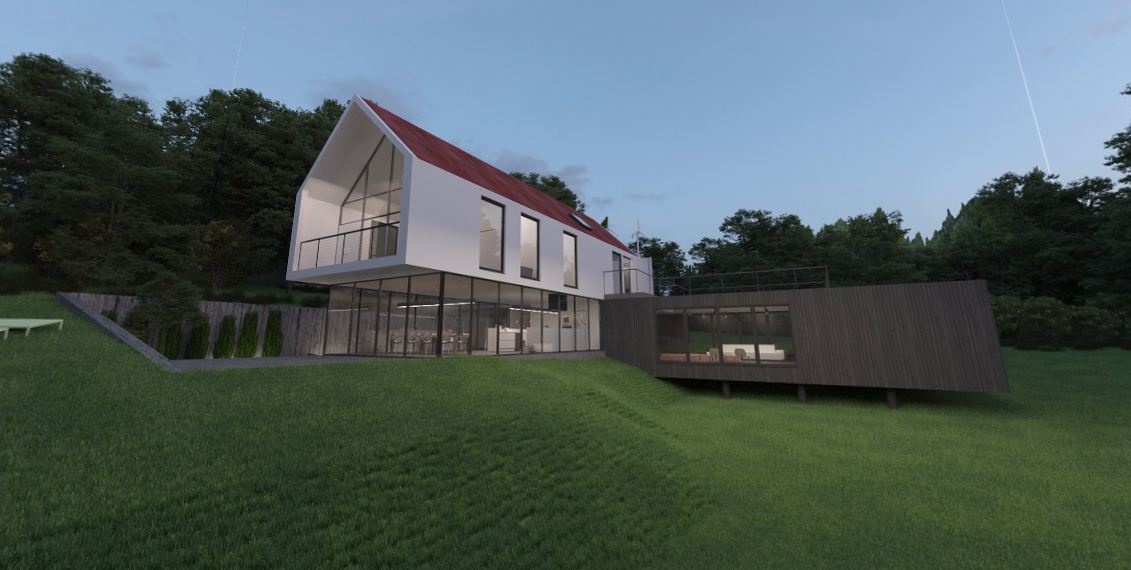360º panorama images are an emerging trend in architectural design. There are many different terms that describe the same thing: panoramic rendering, 360º rendering, stereoscopic rendering, panorama image, 360º image or monoscopic rendering. For now, we’ll refer to them as 360º panorama images.

As with many new emerging technologies, 360º panorama images are often seen as an extra topping to decorate a final design package. Its immersive quality creates a good source of entertainment to our clients during a presentation. However, panoramic renderings have a lot more potential to enhance architects’ daily design workflow, and it does not require expensive and time-consuming setup when using Modelo.
Many of our clients have limited experience in spatial thinking and therefore have trouble visualizing the spaces we are designing. Producing a rendering is a good way to help them visualize the space, especially when it comes to describing materiality. However, it’s still somewhat limited when we want to discuss spatial relationships since it’s hard to describe a 3-dimensional quality using a single snapshot of a 2D image. This is where 360º panorama images can help.
360º images position the viewer directly in the space and context. They help to convey information about orientation, distance, size and height as the viewer rotates the screen. As designers, we all the situation of “manipulating” the rendering by using a wide-range lens to capture more design features into the scene. However, they are quite real because our human eyes do not see as much in real life. We get a sense of space by looking around and processing the information about distance to ourselves and about the size of the space. A panorama image, especially when paired with Virtual Reality, mimics this real life environment and makes it easy for everyone to understand the design intent.

By mimicking the real life environment, a 360º image helps us to make informed design decisions faster. In many design scenarios, it is hard to evaluate one option against another option only by looking at their plan differences. For example, in arranging seats for an auditorium, it is hard to evaluate how one seat can block the view of the adjacent seats from left to right, up, back, and in all angled directions. A panoramic rendering at the location makes this assessment easy and intuitive, especially with Modelo, by creating a panoramic experience in seconds.
Architectural design is inherently three-dimensional. We have long been confined with the tools of 2D representation, but a new wave of 3D presentation has already started and will define a new standard for the future of architectural representation.
Start upgrading your design reviews today and making informed design decisions quicker with Modelo.

